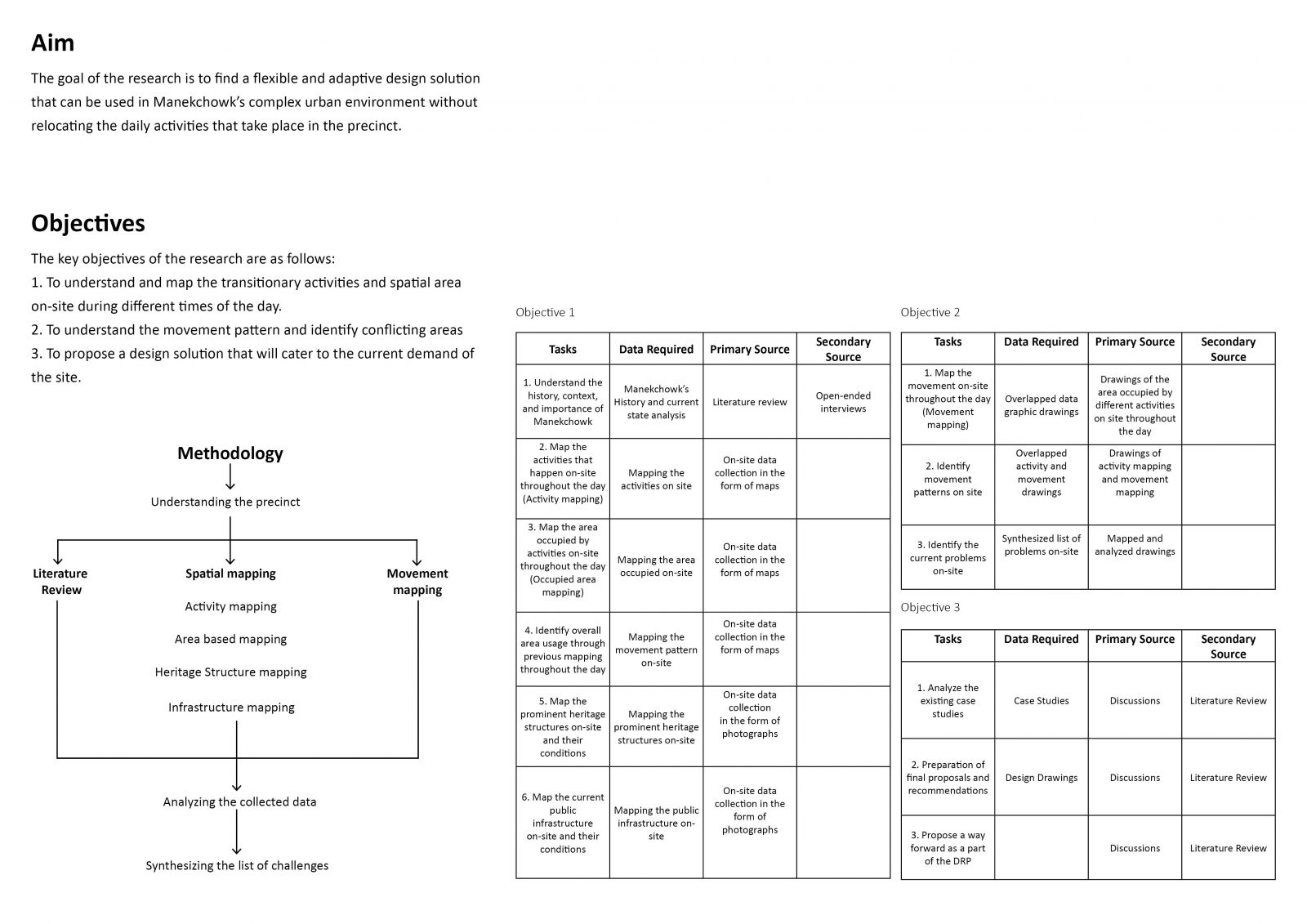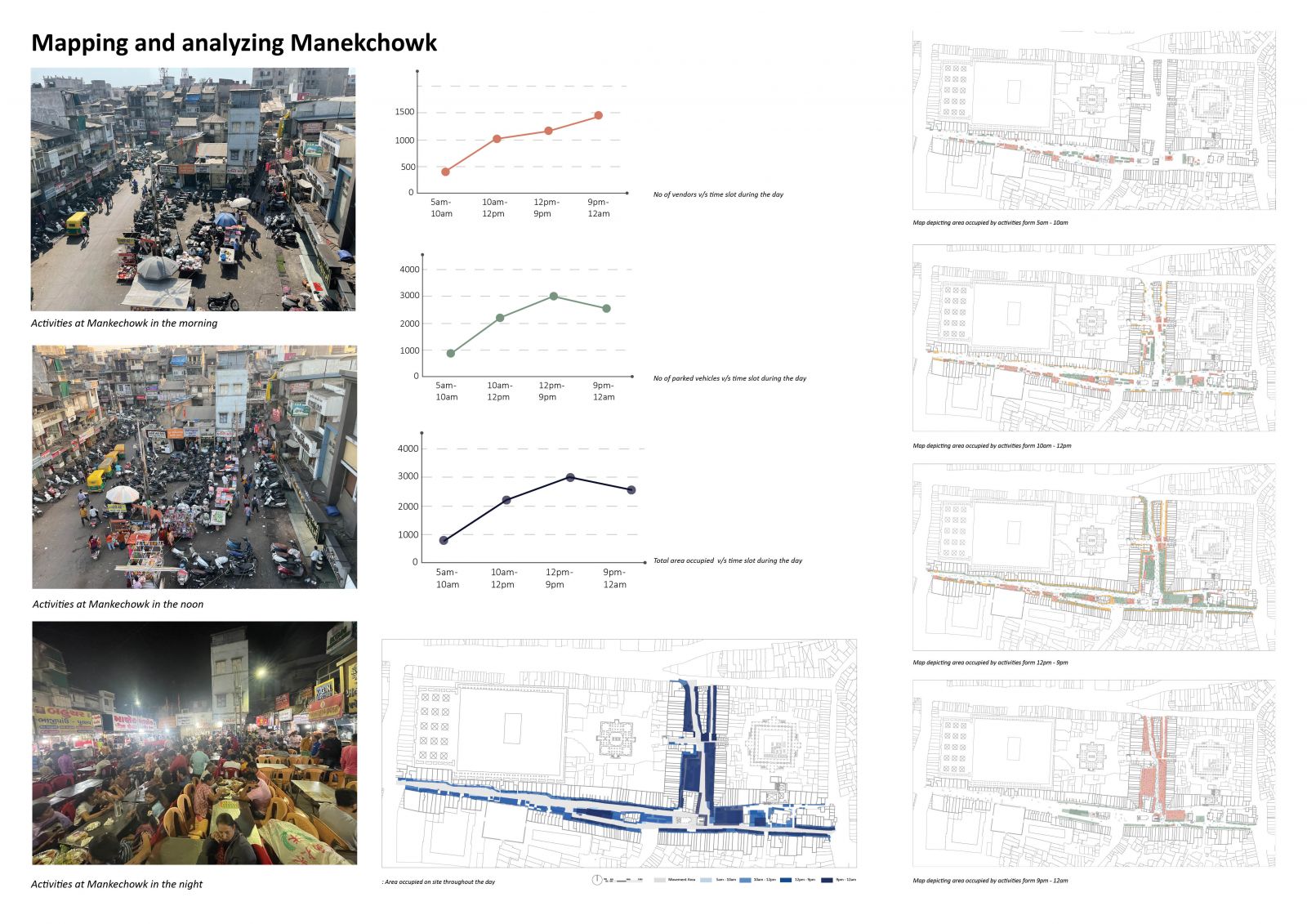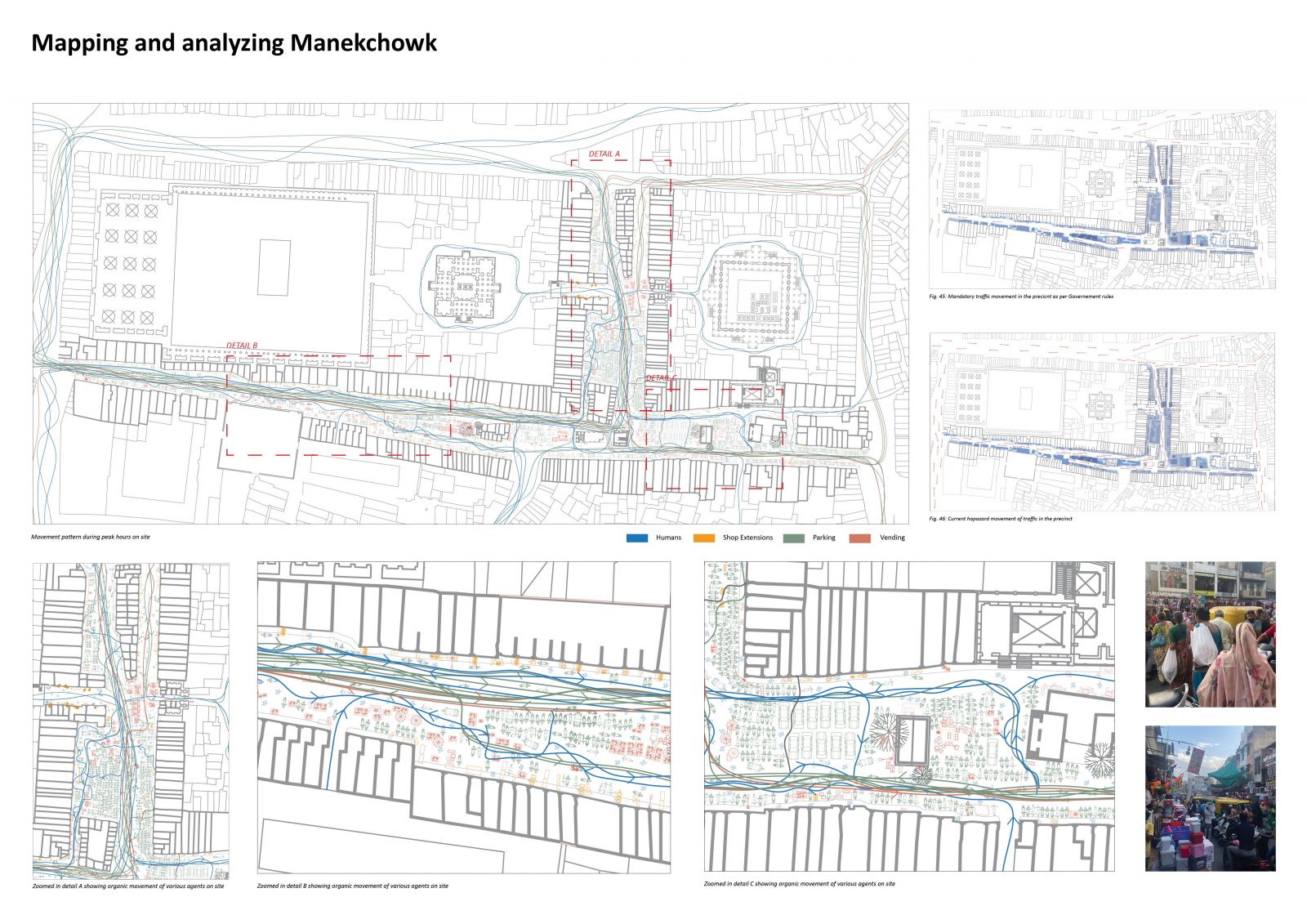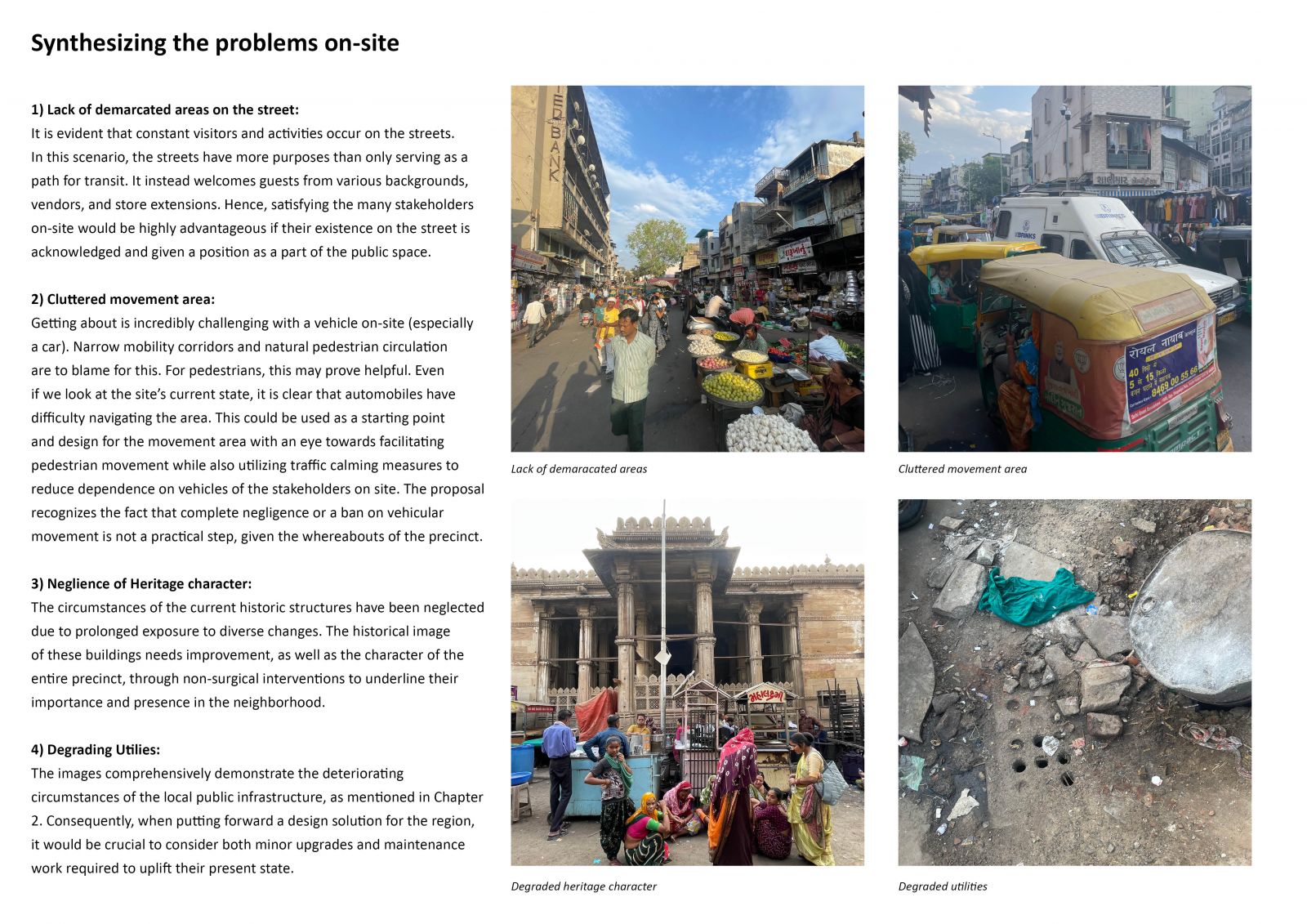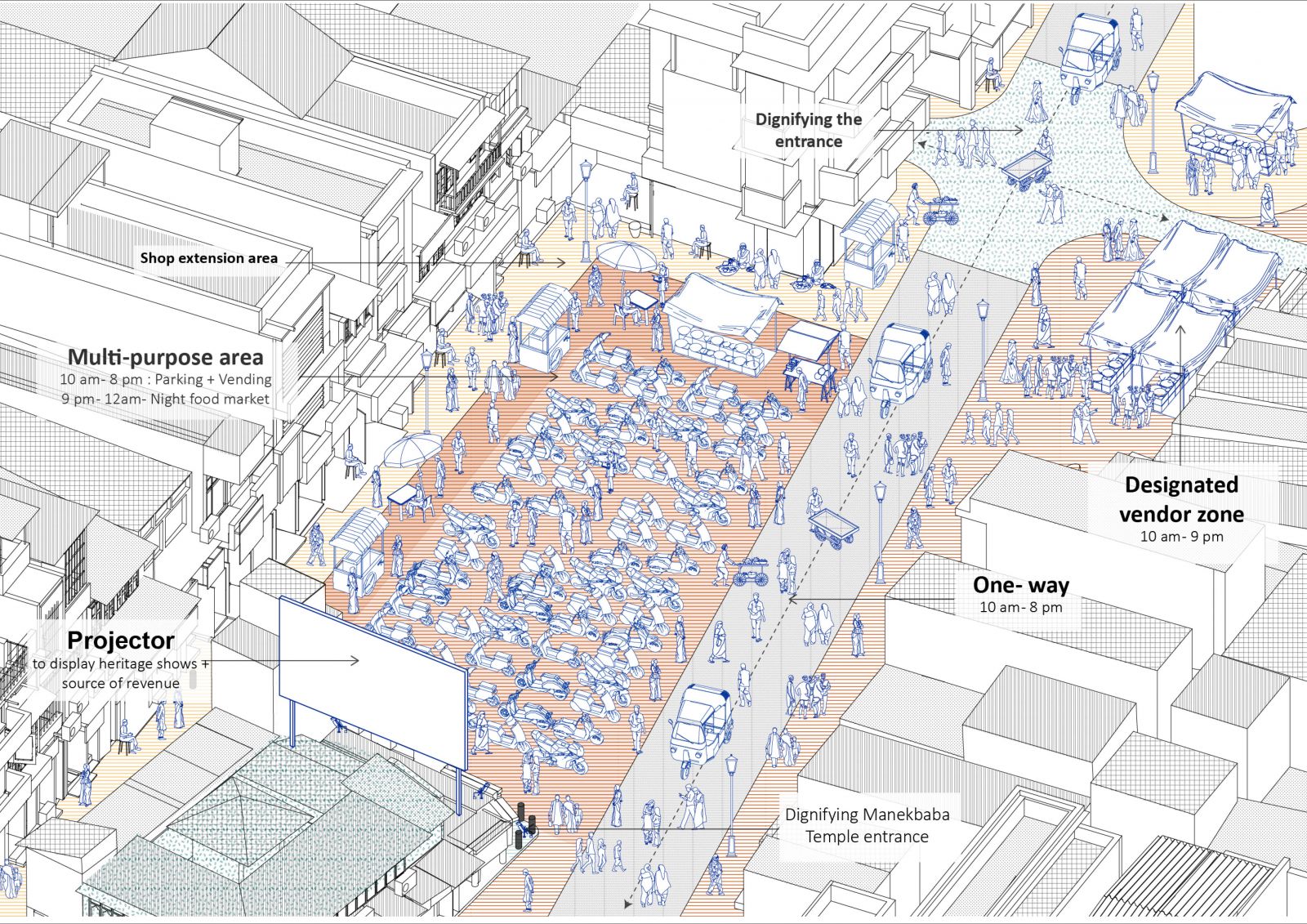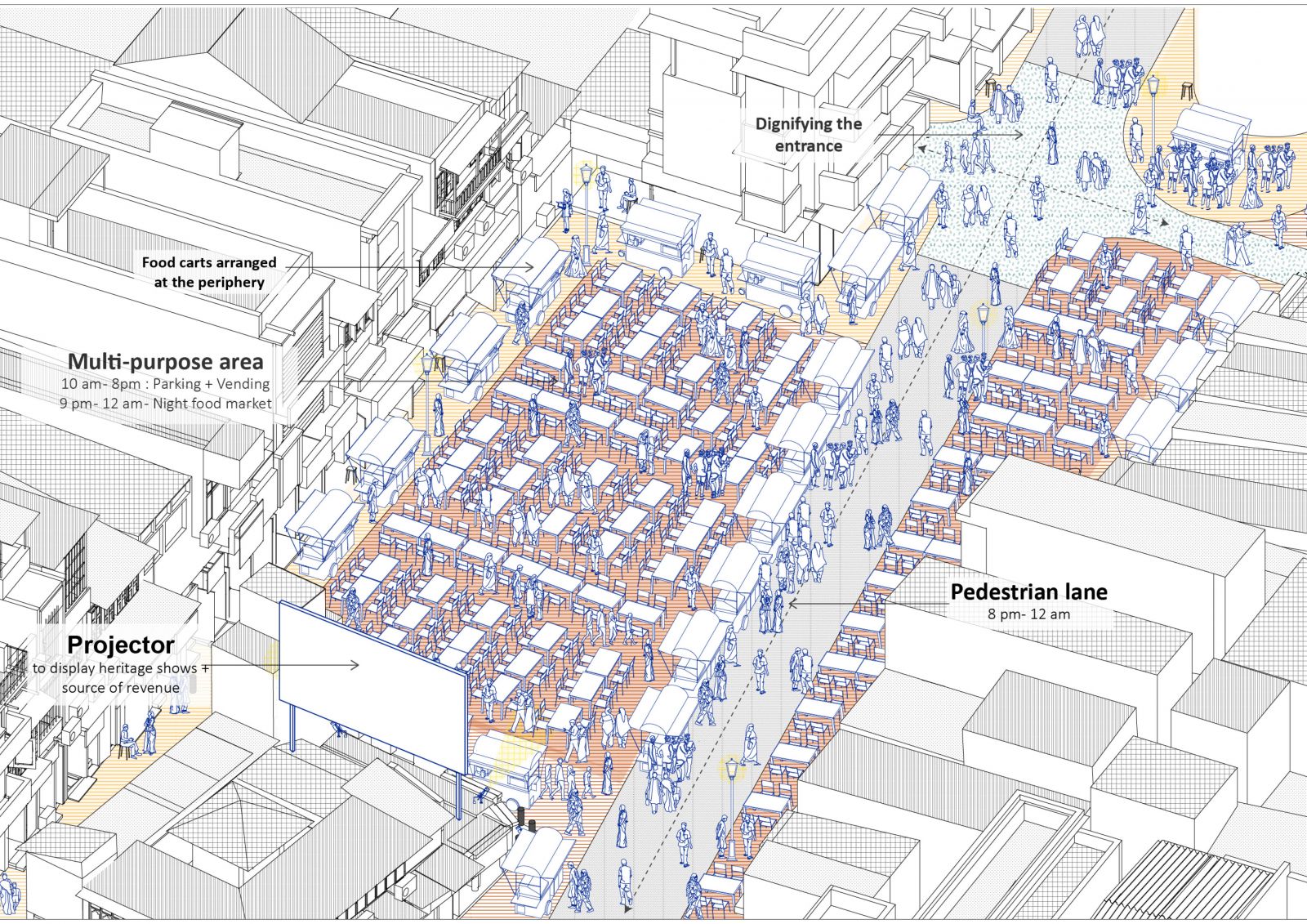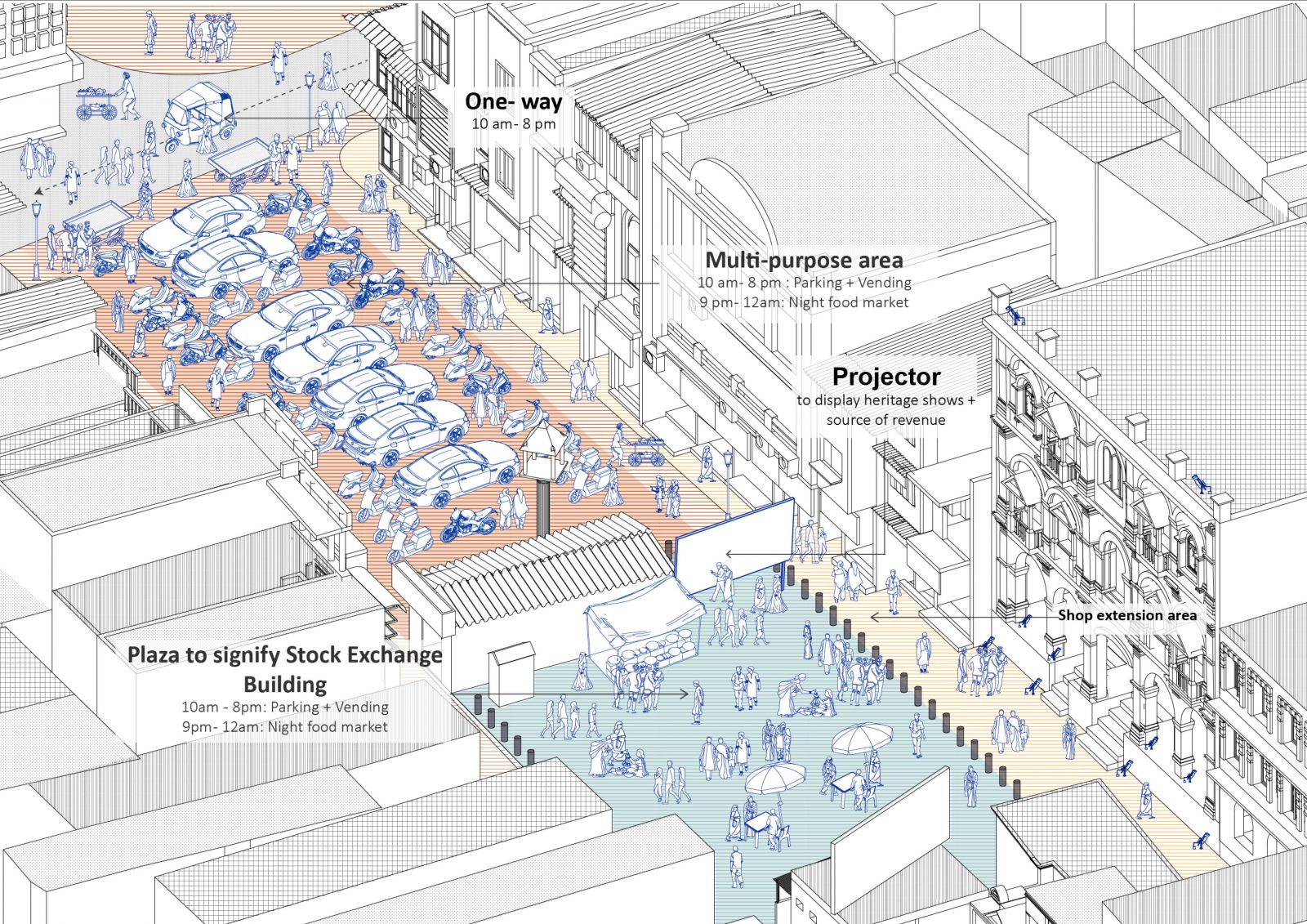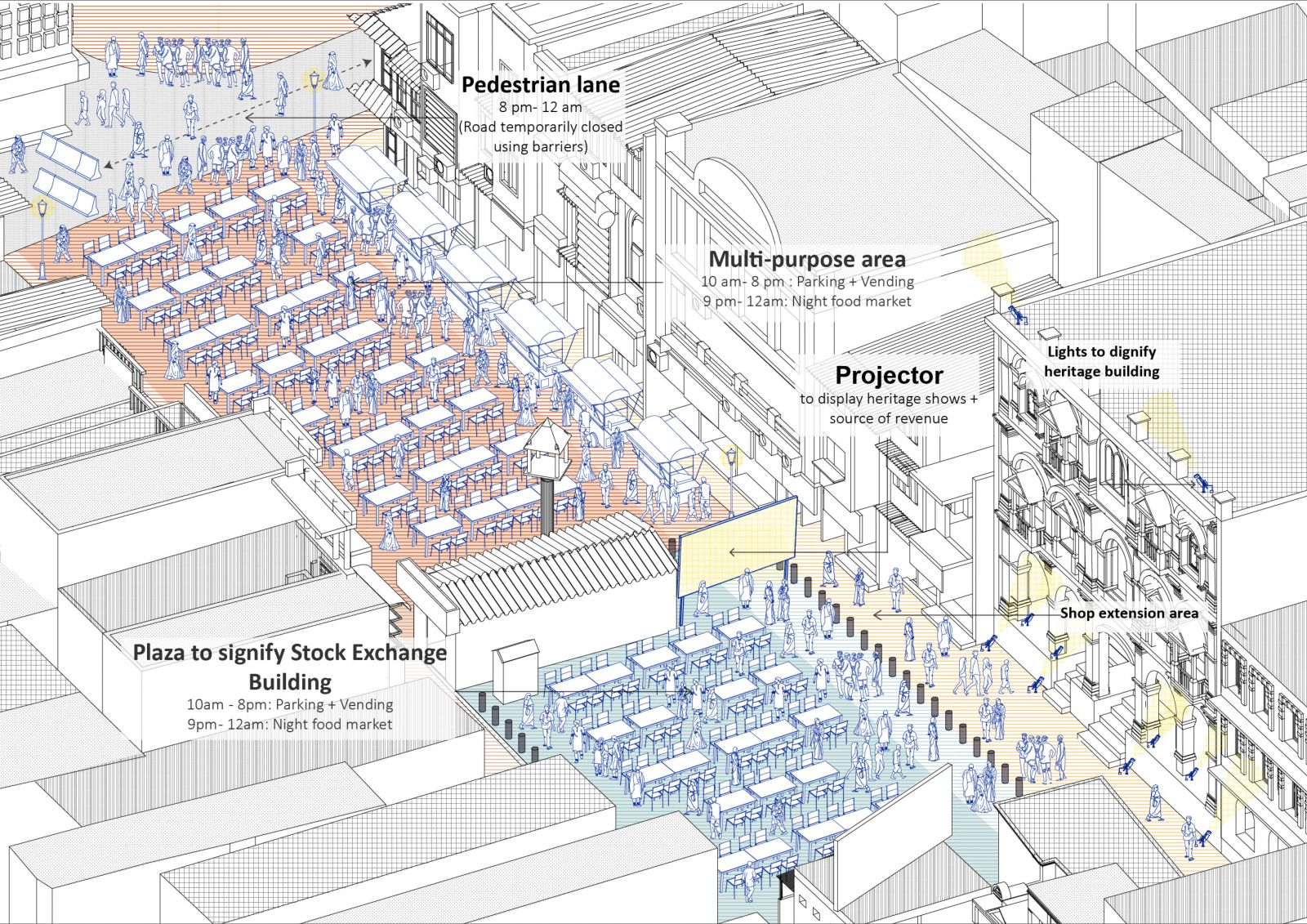Your browser is out-of-date!
For a richer surfing experience on our website, please update your browser. Update my browser now!
For a richer surfing experience on our website, please update your browser. Update my browser now!
Urban cities are ever-changing. These changes come about over a period of time due to numerous tangible (physicality of a place) and intangible (change in usage patterns, political impacts, and cultural shifts) factors. Consequently, people’s use of the same space also evolves accordingly. Ahmedabad - India’s first world heritage city - is no exception to this scenario. Manekchowk, a crucial public square in the city, has been around since the 16th century and has served as an essential meeting place for the city’s merchants, traders, and artisans. It is quite a detailed case study for an adaptive urban space whose usage changes daily from morning to evening. Transitioning from a fruit market in the morning to a jewelry market at noon and eventually into a food market at night, the place stands as an appropriate example of kinetic urban spaces. The square still functions as a gathering place for many. However, the rising population and the demanding needs of the people have resulted in cramped pathways, traffic congestion, and loss of social and heritage character on the site. Through interviews, observations, and analysis of the market’s history and development, the research aims to uncover how Manekchowk has changed over time and how its ephemeral character has been shaped by its physical, economic, and social environment. By understanding the market’s temporality, this study will propose a design solution and recommendations that would cater to the various layers of activities with respect to time that overlap in the precinct. It will explore solutions to facilitate the on-site transitionary movements and the activities that follow them throughout the day. The research will conclude with a way forward by advocating for a flexible design solution for a challenging urban environment like Manekchowk and many other locations that face the same problem in the present context.
View Additional Work